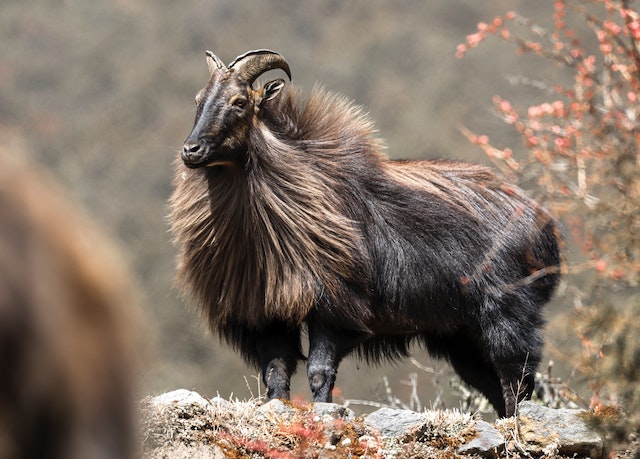
How do mammals keep warm in the winter? They have several different methods. Here are some of them.
Many mammals stay warm by putting on more fat. Sea mammals have to cope with very cold ocean water and it is harder to stay warm in water than it is on land. If you are naked in cold air, the air will pull heat energy out of your body, but the water will pull it out even faster. It takes 3200 times as much energy to heat a cubic centimeter of water by 1˚C than it does to increase the temperature of the same volume of air. That means the water next to your body removes most of the heat from you, but doesn’t heat up very quickly. And because water is so dense, the smallest current will displace the water next to your body that you have started to warm up. That is why a wet suit works so well. It has tiny pores that stop the water next to your skin from being moved away.
Marine mammals stay warm by using blubber to insulate them. Blubber is not the same as normal body fat. It is thicker and denser. The blubber on a whale can be up to 50 cm thick. This layer of blubber keeps the cold water away from the warm inside of the animal. The blubber also has a lot of blood vessels and when the water or environment is cold, the blood vessels constrict, reducing the blood flow in the mammal, and keeping it warmer because it spends less energy to heat itself. Blubber is also a vital source of energy for the mammal and a source of buoyancy for ocean mammals.
A fur coat is another method mammals use to stay warm. Sea mammals that have fur, such as otters, stay warm in the cold ocean by trapping air in their fur. They have two layers of fur. The individual hairs in their inner fur have scales on them. When the animals get in the water, the hairs interlock, creating a waterproof coat that traps a layer of air in by their body. It then works in a similar way to a wetsuit. Because the layer of air can’t move, it is heated up by the animal’s body and stays warm, insulating against the cold water. The outer layer of hair is oily, which makes the water slide off rather than be absorbed.
Many mammals that live on land also use fur to keep warm. They usually have different coats of fur, one for the summer and one for the winter. As the weather gets colder, they molt their thinner summer fur and grow a thicker layer of winter fur. The thicker the animal’s fur is, the more air it can trap. This air sits next to the body and is warmed up, providing insulation against the cold. Other animals grow an inner coat of fur as the weather gets colder. Porcupines actually grow inner fur through the winter and then lose it in the summer.
A lot of mammals that live in snowy places are white and this obviously makes sense from a camouflage perspective, but it serves another purpose as well. Hair color is created by the pigments in the hair. These pigments take up space. White hair doesn’t have any pigment and the space where the pigment would have been is taken up by air. This air gives a second layer of insulation because the more air an animal can trap, the warmer it will be. Deer and moose grow fur that is slightly hollow in the winter. They don’t lose their color, but their hair becomes hollow shafted. Mountain goats combine all of these techniques, and they can survive temperatures down to -45˚C. They have a wooly undercoat that is about 10 cm thick, covered by a thick layer of long hollow hairs.
Some tiny mammals can’t grow a thick coat because of their size. Mice survive the winter by living inside the snow. They make long, insulated burrows in the subnivean zone. This is the area under the snow, and it is insulated and sheltered from the wind. Temperatures rarely go below freezing and mice make burrows that are warm.
Of course, many mammals survive the winter by hibernating. They lower their metabolism drastically and let their body temperature drop. Bears enter a period of hibernation that is actually a torpor. They lower their temperature and their heart rate, but they can wake up and move around if they need to. Some smaller mammals can actually completely hibernate. Chipmunks lower their heart rate from 350 beats a minute to 4 beats. Their body temperature drops so low that it can go below freezing in the winter. They have excess salt in their bodily fluids that stops them freezing and their cells crystalizing. Bears can’t do this because their bodies are too big to lose all of the excess heat.
So, how do mammals stay warm in the winter? They have many methods ranging from blubber to a really thick winter coat. And this is what I learned today.
Sources
https://animals.mom.com/might-animal-live-cold-places-7738.html
https://education.nationalgeographic.org/resource/blubber
https://bestlifeonline.com/how-do-animals-stay-warm/
https://www.mentalfloss.com/article/71087/15-incredible-ways-animals-stay-warm-when-its-chilly
https://asknature.org/strategy/fur-keeps-heat-in-and-cold-water-out/
